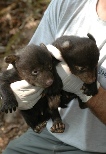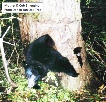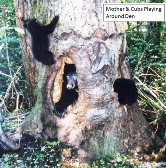
HOOPA TRIBAL FORESTRY
Hoopa Valley Tribal Reservation


HOOPA TRIBAL FORESTRY
HOOPA VALLEY TRIBAL RESERVATION
Po Box 368 - Hoopa, California 95546 - (530) 625-4284
All Rights Reserved - Copyright 2012 © Hoopa Valley Tribe
Hosted By: www.velotech.net
Powered By: Apache
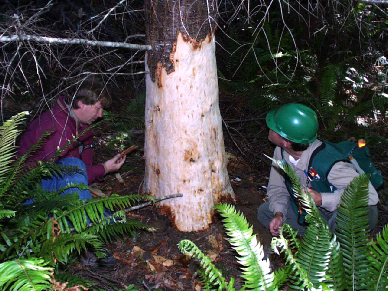
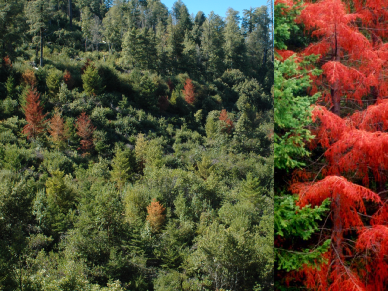
CURRENT CONDITIONS
Bear damage was first documented on the Hoopa Valley Tribal Reservation in 1978 when damage was discovered in the northwest corner of the Reservation. Damage spread through the northern portion of the Pine Creek management unit and into the Bald Hill Management unit by the mid 1980’s. By 1988 bear damage had become a major concern. By 1990 damage had spread to the south end of the Pine Creek management unit. By the mid 1990’s damage was found throughout all four of the management units west of the Trinity River. Damage was first reported from east of the Trinity River in May of 1998. The damage east of the river was suspected to have begun in 1994-96. Black bears have cultural significance to the Hupa people and other local tribes. Generally no hunting of bears occurs on the Reservation however, many people are not apposed to killing bears when they are damaging personal property and it is estimated that between 10 and 20 bears are killed annually for this reason.
VEGETATION
The majority of the 90,765 acre Hoopa Valley Tribal Reservation is dominated by forested habitats consisting of old growth (39.8%), natural young growth (7.6%), cutover (43.9%) and hardwood dominated (5.8%) stands (Table 1). Of the 39,858 cutover acres, 6,565 (16.6%) acres have been pre-commercially thinned (PCT). Bear damage has occurred extensively within thinned plantations but has also affected other cutover stands and natural young growth stands. Of the PCT acres, at least 51.1% have been impacted by bear damage as of August 1999.

POPULATION
The Reservation’s bear population is estimated to be approximately 428 bears or 3.0 bears/square mile. The density of bears appears to be significantly higher west of the Trinity River with 4.4 bears/sq. mi. (95% CI, 3.3-5.0) reported as compared to the east side with 2.1 bears/sq. mi. (95% CI, 1.4-2.6)(Mathews). The age class and sex ratio data collected indicates that the Reservation bear population is well balanced at this point in time. The fact that the overall sex ratio was nearly 50/50 was somewhat unexpected. As expected males tended to be in better physical condition than females. Data collected on radio collared and ear tagged bears indicate that Reservation bears move on and off of the Reservation periodically and sometimes travel 20+ miles from their trapping locations.



